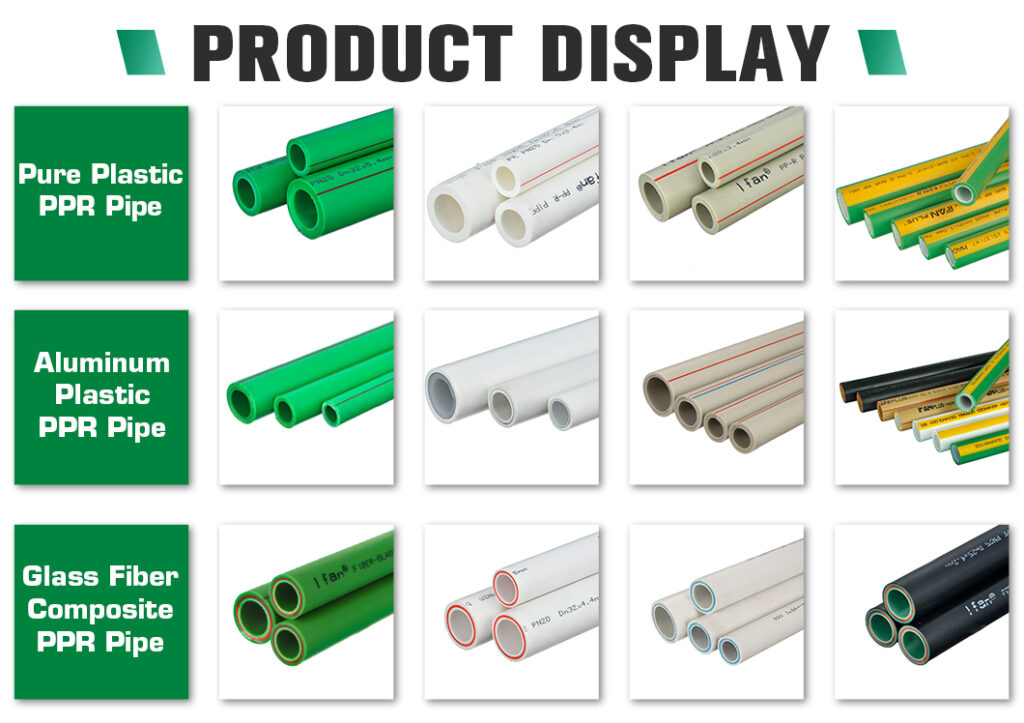PPR Pipes: Transforming Modern Infrastructure ,The PPR (Polypropylene Random Copolymer) pipe industry has become a cornerstone of modern infrastructure, driven by innovation and a commitment to sustainability. In this article, we explore the diverse applications of PPR pipes, their role in sustainable development, and the latest advancements in this field.IFAN factory 30+ years manufacture experience support color/size customization support free sample.Welcome to consult for catalog and free samples.This is our FacebookWebsite: www.facebook.com.
Diverse Applications of PPR Pipes
Building and Construction:
PPR pipes are widely utilized in the construction industry for plumbing and sanitary systems. Their resistance to corrosion, smooth internal surface, and ease of installation make them an essential component of modern buildings.
Heating and Cooling Systems:
PPR pipes are the preferred choice for heating and cooling systems, ensuring efficient heat transfer in underfloor heating, radiator installations, and air conditioning.
Chemical Industry:
In the chemical sector, PPR pipes play a pivotal role in the safe transportation of various chemicals. Their remarkable resistance to chemical corrosion safeguards the integrity of transported substances.
Pharmaceuticals:
PPR pipes are integral in pharmaceutical manufacturing, guaranteeing the delivery of purified water and critical fluids without contamination.
Food and Beverage:
PPR pipes maintain the purity of water and safely transport beverages and food products in the food and beverage industry, complying with stringent hygiene standards.
Renewable Energy:
PPR pipes are vital in solar heating systems, ensuring the efficient flow of heat-carrying fluids even under extreme temperatures.

Sustainability and Eco-Friendly Features
PPR pipes align with sustainability efforts in various ways:
Recyclability:
PPR is a recyclable material, contributing to waste reduction and resource conservation.
Energy Efficiency:
PPR pipes are integral to green building practices, reducing heat loss in heating systems, thus conserving energy and reducing greenhouse gas emissions.
Water Conservation:
PPR pipes are crucial in water-saving initiatives, as they deliver potable water without leaks or contamination, contributing to responsible water management.
Longevity:
PPR pipes boast an extended service life, reducing the need for frequent replacements and lessening the environmental footprint.
Advancements in PPR Pipe Technology
The PPR pipe industry is continually evolving with cutting-edge advancements:
Smart PPR Systems:
PPR pipes are now integrating smart technology for real-time monitoring and control of water supply and heating systems. This results in optimized energy consumption and reduced water wastage.
Enhanced Material Formulations:
Ongoing research and development efforts are directed at improving PPR material properties. These advancements include greater resistance to extreme temperatures, higher pressure tolerance, and enhanced chemical resistance.
Water Quality Monitoring:
Some PPR pipe systems now incorporate sensors for real-time water quality monitoring, ensuring the delivery of safe and clean water.
Insulated PPR Pipes:
The integration of insulation layers within PPR pipes enhances energy efficiency, reducing heat loss in heating systems, thus saving energy and resources.
International Standardization:
The industry is moving toward international standardization to ensure consistent quality, safety, and compatibility across the global market.
In conclusion, PPR pipes have become integral to modern infrastructure, addressing the ever-increasing demand for efficient water supply, heating, and chemical transport systems. Their remarkable sustainability, durability, and adaptability make them key players in the quest for eco-friendly and efficient solutions. As the industry continues to advance, PPR pipes are set to become even more efficient and sustainable, driving innovation and enhancing infrastructure development worldwide while minimizing environmental impacts.

